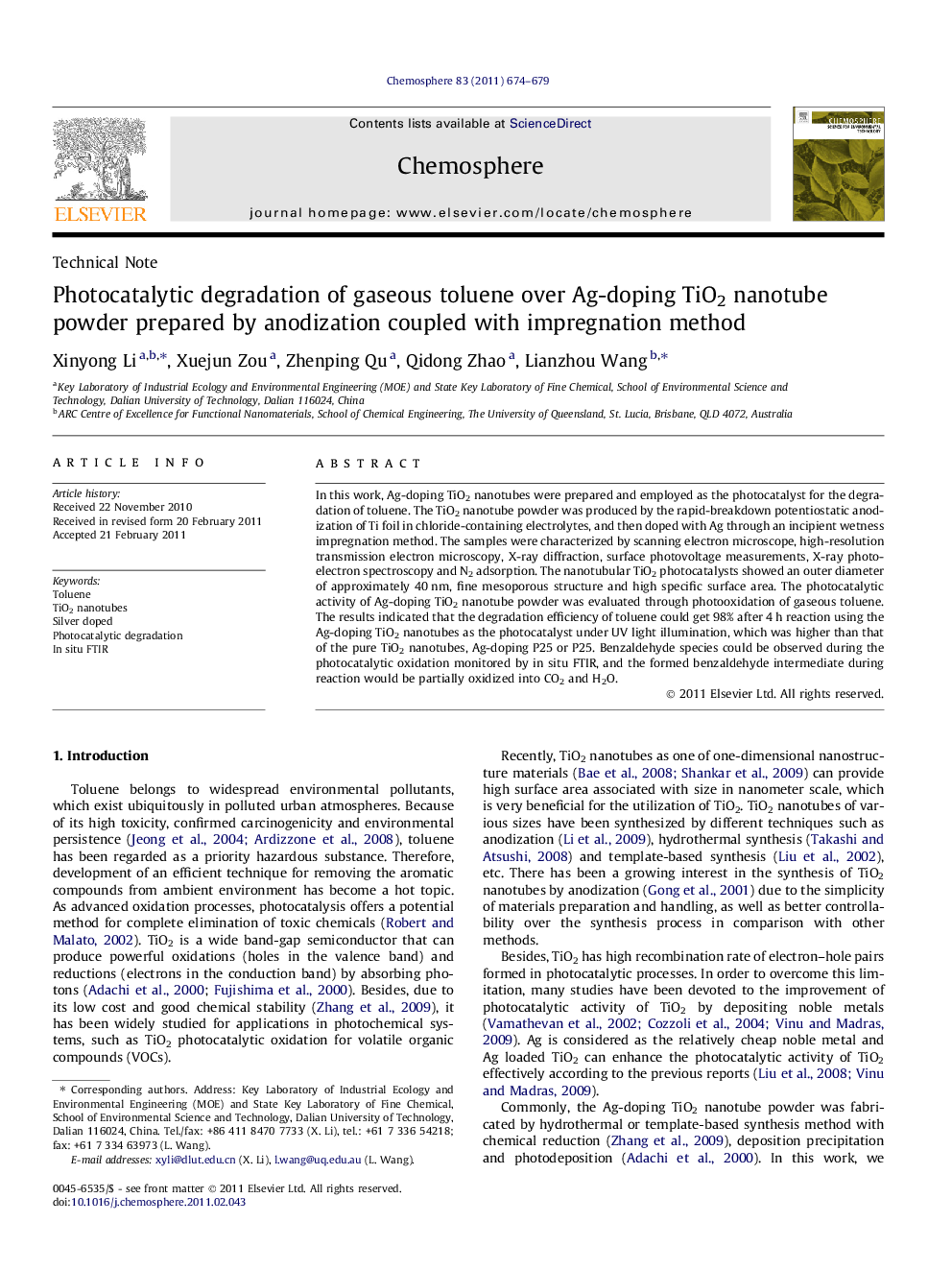| Article ID | Journal | Published Year | Pages | File Type |
|---|---|---|---|---|
| 4410843 | Chemosphere | 2011 | 6 Pages |
In this work, Ag-doping TiO2 nanotubes were prepared and employed as the photocatalyst for the degradation of toluene. The TiO2 nanotube powder was produced by the rapid-breakdown potentiostatic anodization of Ti foil in chloride-containing electrolytes, and then doped with Ag through an incipient wetness impregnation method. The samples were characterized by scanning electron microscope, high-resolution transmission electron microscopy, X-ray diffraction, surface photovoltage measurements, X-ray photoelectron spectroscopy and N2 adsorption. The nanotubular TiO2 photocatalysts showed an outer diameter of approximately 40 nm, fine mesoporous structure and high specific surface area. The photocatalytic activity of Ag-doping TiO2 nanotube powder was evaluated through photooxidation of gaseous toluene. The results indicated that the degradation efficiency of toluene could get 98% after 4 h reaction using the Ag-doping TiO2 nanotubes as the photocatalyst under UV light illumination, which was higher than that of the pure TiO2 nanotubes, Ag-doping P25 or P25. Benzaldehyde species could be observed during the photocatalytic oxidation monitored by in situ FTIR, and the formed benzaldehyde intermediate during reaction would be partially oxidized into CO2 and H2O.
► TiO2 nanotube powder was prepared by anodization and doped with Ag by impregnation. ► Toluene removal efficiency was 98 % in 4 h using the 1% Ag-doping TiO2 nanotubes. ► Benzaldehyde or benzoic acid was main by-product, and finally partially mineralized.
